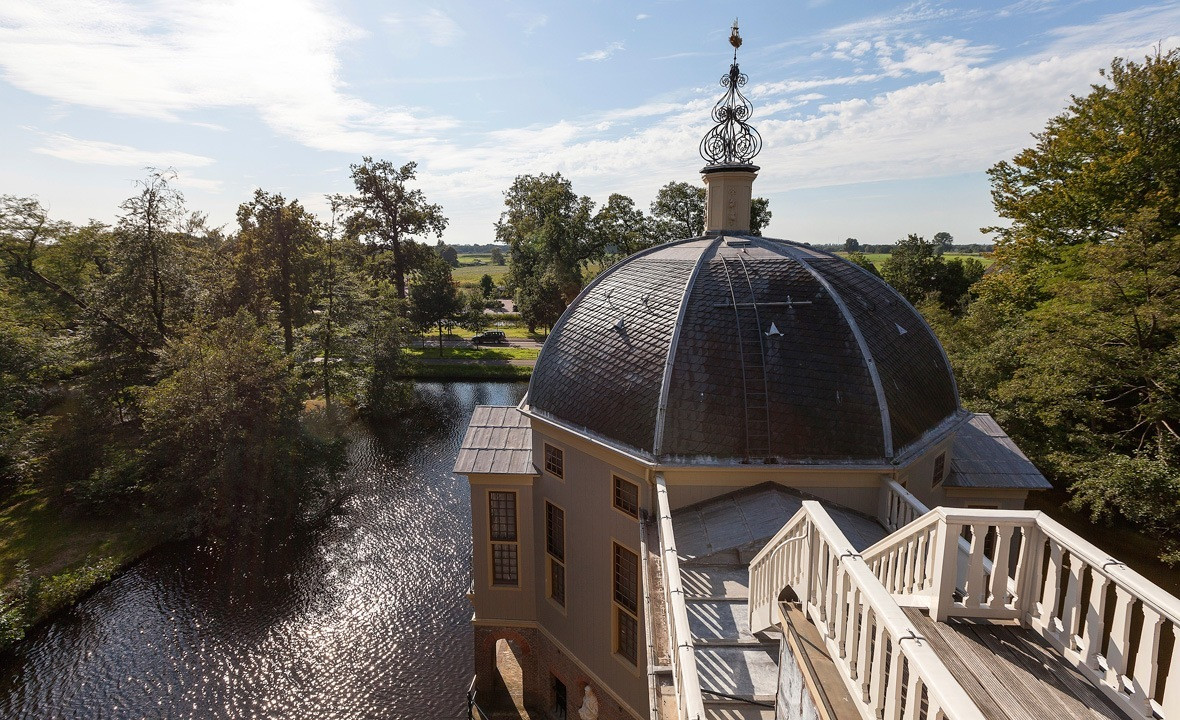


Buitenplaats Trompenburgh is a seventeenth-century land reclamation west of Hilversum, on the border of the higher-lying sandy soils of the Gooi and the lower peatlands of the Vecht. Huis Trompenburgh is a landmark and the icon of ‘s-Graveland, and is part of a series of ‘s-Graveland estates. Although much has disappeared or been transformed over the course of time, the late seventeenth-century structure is still the basis of its current image. The concept of Karres en Brands involves restoring the park-garden of Trompenburgh, whereby the story of the manor is portrayed in a respectful manner. To this end, a future concept was first developed, which constitutes the basis for the design to be further developed in the coming years. The first phase was carried out in 2012.

Although Huis Trompenburgh has been restored in a number of phases, the current park layout is only a shadow of what it must have once been, according to pictures from 1704. A large part of the park’s structure has disappeared, and the remaining part is seriously neglected. The current layout is disjointed and lacks, besides a clear spatial structure, refinement in its details.



The most important qualities of the current park layout are the recognisability of the basic seventeenth-century form, some characteristic additions, such as the scenic layout of paths, and the presence of a copse with very large trees. This asks for a design that is distinguished by flexibility on a solid base. The essence of the seventeenth-century site design, coupled with the structural and symbolic-conceptual design of the main building, is foremost in the renovation plan. In the case of Trompenburgh, reconstruction of the seventeenth-century design in a ‘museum’ sense is not the sought after intent. On the contrary, Trompenburgh will be restored while preserving several surviving features and respecting its contemporary use.


In the first phase, the scenic and antique layout of paths in the woods is restored, the tree population is partly thinned and supplemented, estate planting is implemented, and the centrally located, round historic pond is restored.

| Location. | ’s-Graveland, Netherlands |
|---|---|
| Assignment | Design future concept for an estate |
| Size | 21 hectare |
| Design | 2010 – 2012 |
| Construction | 2012 (first phase) |
| Status | First phase realised |
| Client | Rijksgebouwendienst |
| In collaboration with | Simon Klingen, Rod’or Advies |
| Copyright images | Chiel van Diest |
| Advisory committee | Erik de Jong, Eric Luiten, Johan Carel Bierens de Haan |
| Copyright | Chiel van Diest, Karres+Brands |